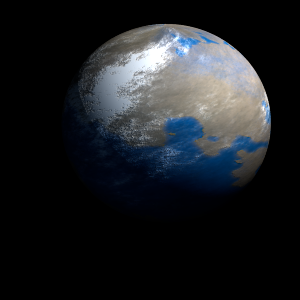|
|
Space Astro
|
Info for exoplanet "Nokaju'tsubu"
| Scientific (actual) data |
|---|
| Name | Kepler-964 b |
| Planet status | Confirmed |
| Radius | 0.189 |
| Orbital period | 13.5225 |
| Discovered | 2016 |
| Updated | 2021-02-05 |
| Tconj | 2454980 |
| Publication | Announced on a website |
| Detection type | Primary Transit |
| Alternate names | 2MASS J19411202+4033237 b, K01825.01, KIC 5375194 b, KOI-1825 b, KOI-1825.01, WISE J194112.01+403323.7 b |
| Star name | Kepler-964 |
| Right ascension | 295.3° |
| Declination | 40.56° |
| Mag j | 12.576 |
| Mag h | 12.237 |
| Mag k | 12.139 |
| Star distance | 478 |
| Star metallicity | 0.03 |
| Star mass | 0.93 |
| Star radius | 0.84 |
| Star age | 1.91 |
| Star temperature | 5427 |
| Star alternate names | 2MASS J19411202+4033237, KIC 5375194, KOI-1825, WISE J194112.01+403323.7 |
| Wikipedia article | Kepler-964 b |
Back
| |
| Fictional info (?) |
|---|
| Suggested name | Nokaju'tsubu |
| Planet type | Cold planet |
| A prominent result is the "great black spot", a giant storm that is known to have existed for centuries since it was first seen by telescope. |
| Atmosphere | Xenon | 51% |
| Nitric oxide | 21% |
| Helium | 16% |
| Hydrogen chloride | 9.2% |
| Ammonia | 1.3% |
| Carbonyl sulfide | 0.12% |
| Atmospheric pressure | 15 bar |
 |
| Moon | Gyatoza'ho | Large almost round oceanic moon |
| Saejazu-pa | Huge irregular rocky asteroid |
| Myoaa Pyoru Go | Medium-sized slightly egg-shaped rocky moon |
| Giburya Shoshu | Huge slightly egg-shaped rocky asteroid |
| Google search for Nokaju'tsubu |
|
Website by Joachim Michaelis
|
|
|
|